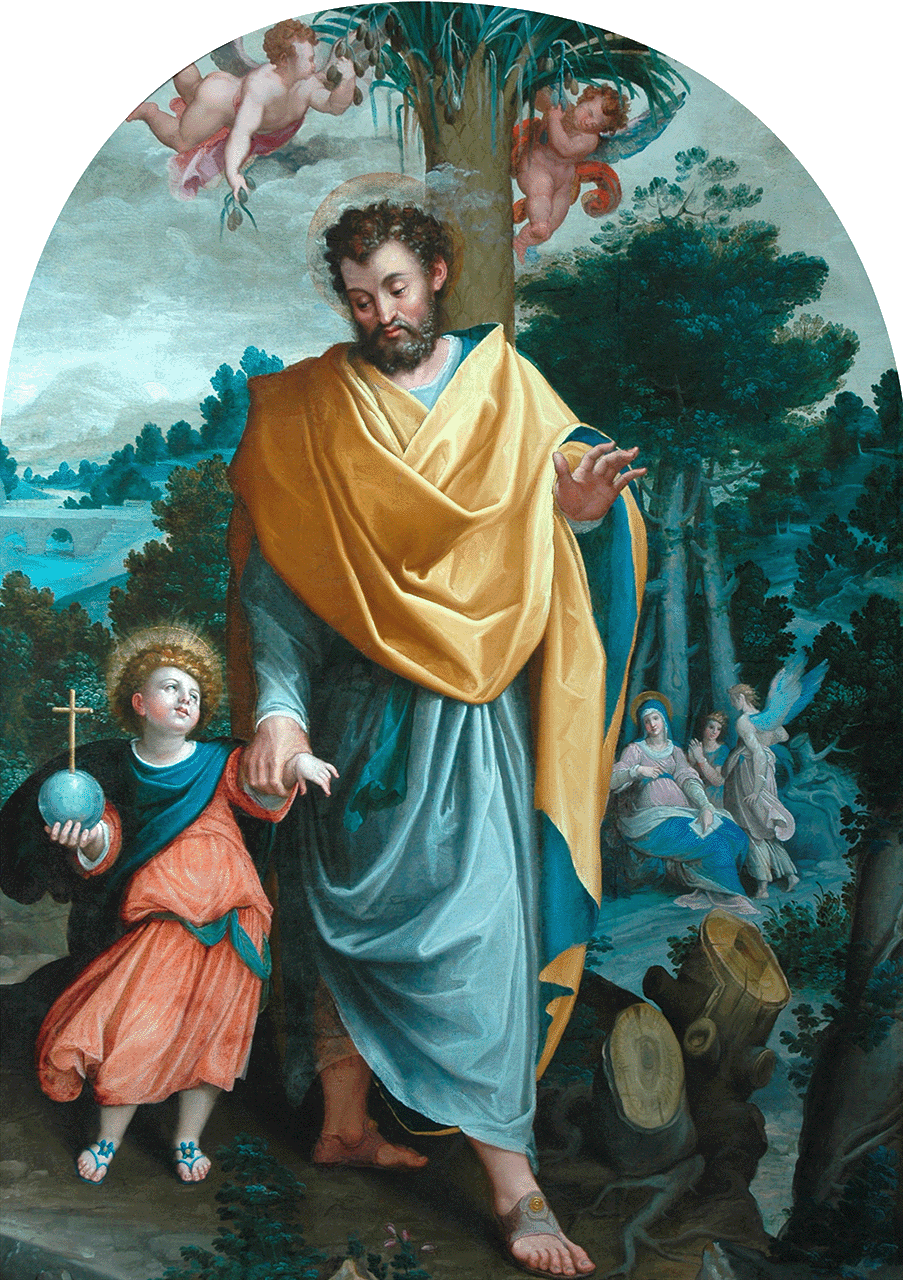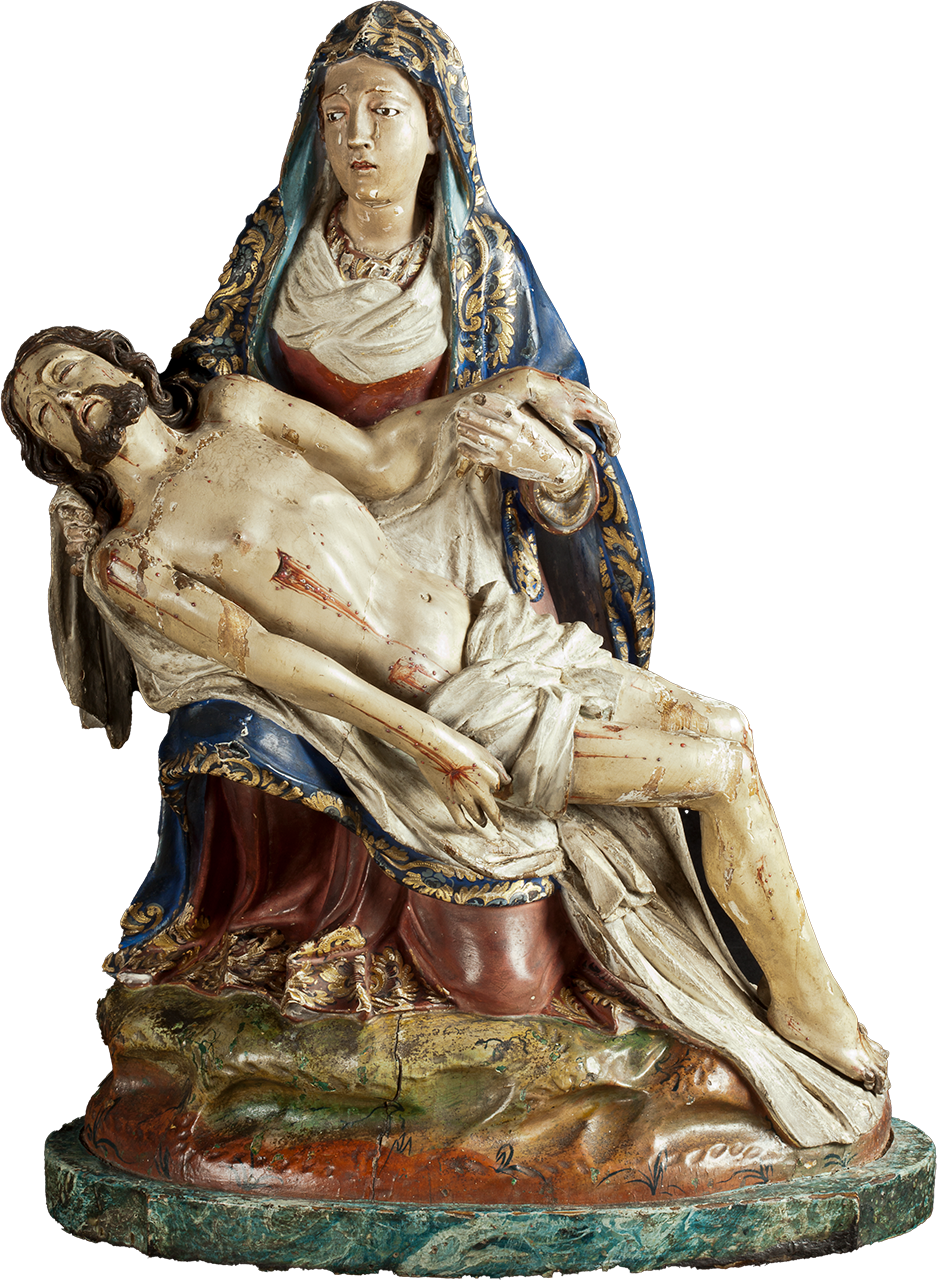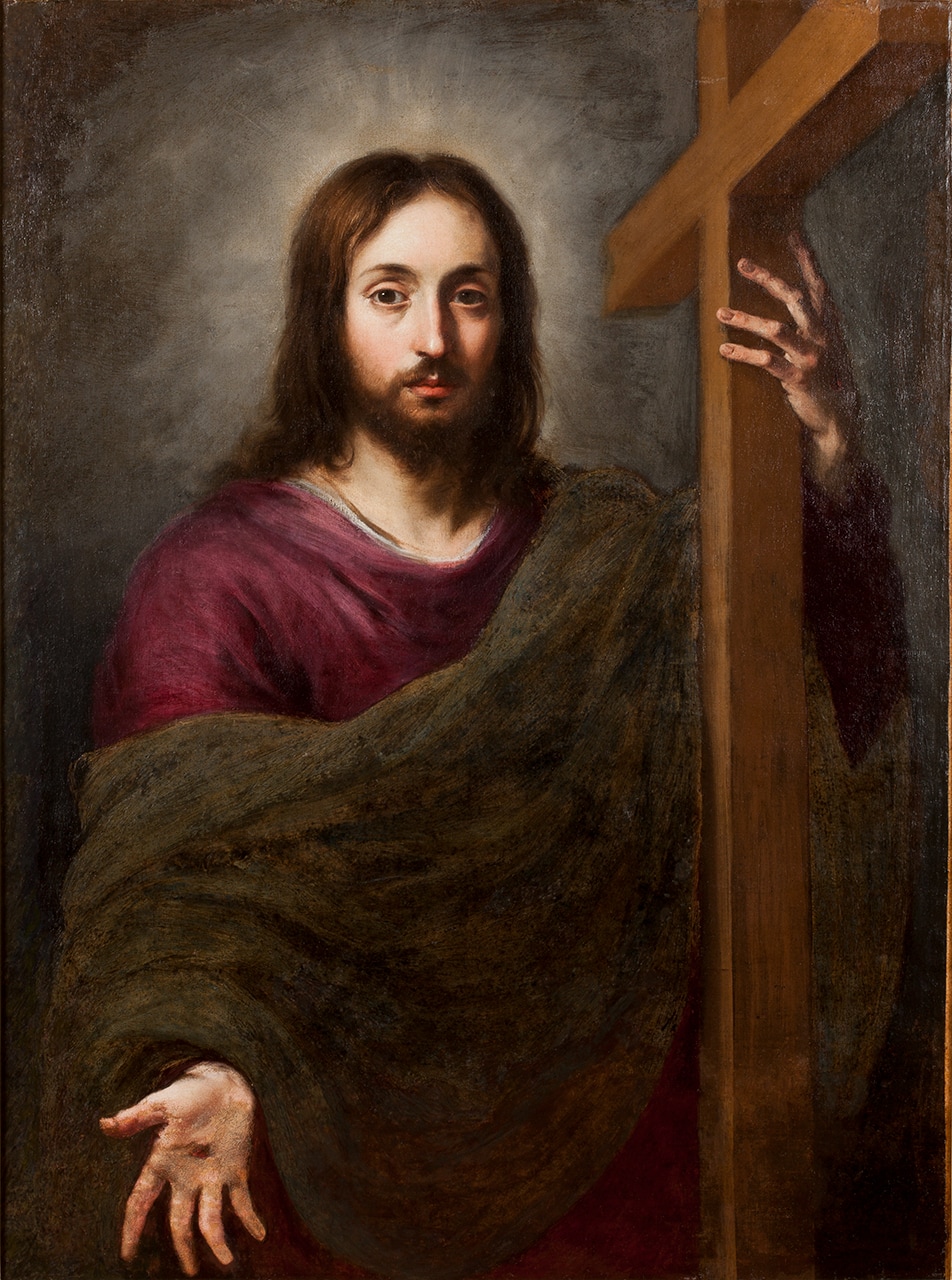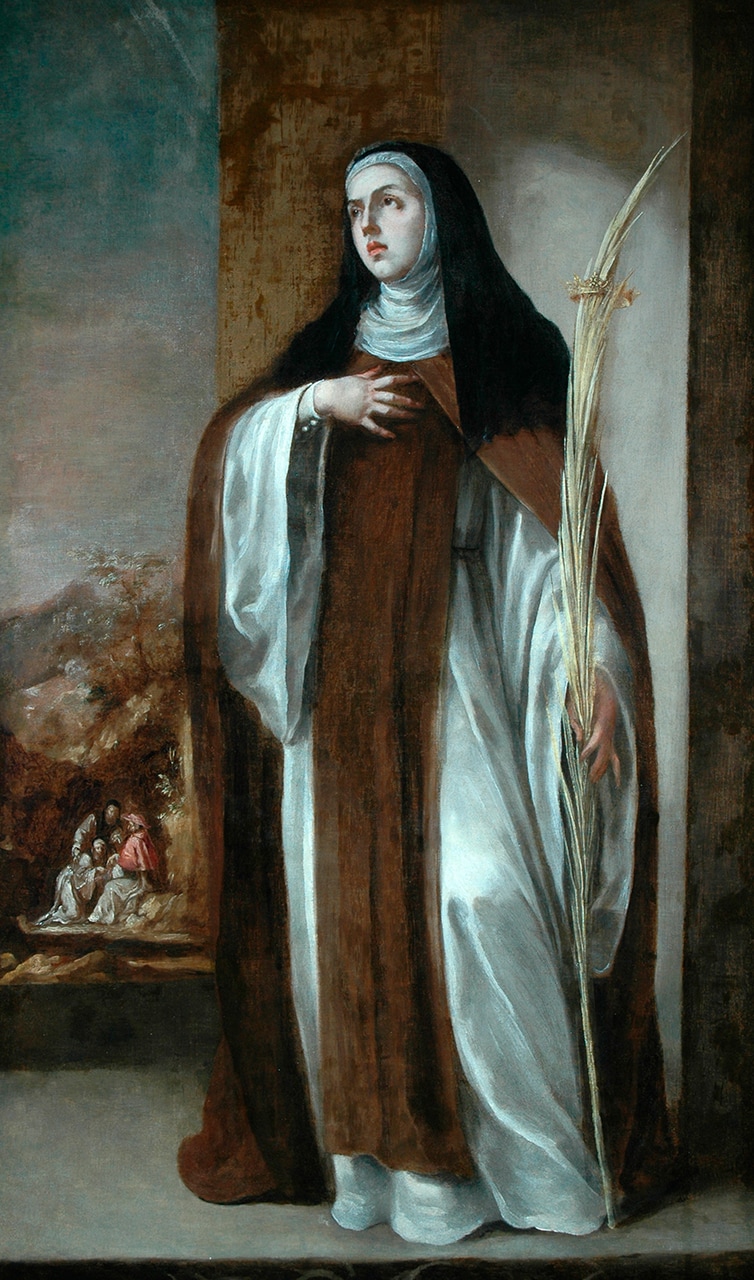
Love
and Devotion
Understand how Spanish artists appraised the relationship between love and devotion.
Spanish artists have adopted a range of approaches towards questions of love and devotion. In view of the centrality of Catholicism to Spanish culture, it is perhaps unsurprising that images of the Holy Family, or of Mother and Child, should occupy such a prominent position, serving as idealized, aspirational models for the devout to admire and emulate.
The same is true of treatments of death: while the Pietà captures the intensity of the Virgin’s grief for her freshly martyred son, The Tears of St Peter emphasizes the everlasting nature of human devotion and the need for repentance and contrition. Yet death is not so much the end of life as its beginning. Just as treatments of the resurrected Christ depict him in majesty in the afterlife, images of the saints underscore the importance of leading lives of Christian purity, and ultimately, of dying well.
Central to perceptions of virtue and reward is the Virgin, who, having been conceived without sin, is able to serve as a divine proxy, bestowing gifts and accolades on those who had striven in life to elevate and refine their devotions.
Madonna and Child
Circle of Luis de Morales, c. 1565–86.
The Bowes Museum, Barnard Castle, B.M.69.
These two compositions explore the intimacy of the relationship between the Christ Child and his parents, Mary and Joseph, revealing the close emotional and psychological bonds between them through the interplay of gazes and gestures. The artist close to Luis de Morales focuses on the Virgin’s connection with the Infant, while Juan de Juanes emphasizes the roles of both parents. Such modestly sized oil paintings were popular in sixteenth-century Spain and are likely to have been intended for private devotion rather than display in churches or religious houses.
Read the in-depth commentaryThe Holy Family
Juan de Juanes, c. 1535.
The Spanish Gallery, Bishop Auckland.
St Joseph Leading the Infant Christ
Circle of Juan Sánchez Cotán, c. 1590–1603.
The Bowes Museum, Barnard Castle, B.M.69.
Inspired by Matthew 2:13–23, which describes how King Herod attempted to slay all of the infant boys in his kingdom, this painting depicts the Holy Family at a moment of rest on their flight into Egypt. Dominating the centre of the composition, St Joseph is portrayed as a man in the prime of life, confidently guiding his son, who tenderly returns his gaze. The cross-surmounted orb in the hands of the Infant symbolizes his triumph over death and the dominion of Christianity on earth, while the vignette in the background shows the Virgin at rest in the company of two angels.
Pietà
Unknown, Seventeenth century.
Ushaw Historic House, Chapels & Gardens (previously known as Ushaw College).
The Ushaw Pietà captures a moment of stillness after the violence and commotion of the Crucifixion. Clothed in a crimson robe surmounted by a blue and gold mantle, the Virgin stares outwards into space while cradling the lifeless body of her son in her arms. Her tearful expression counterpoints the difficulty of reconciling the basic human desire to preserve life with the doctrinal necessity of Christ’s sacrifice, which serves as a mechanism for the redemption of humankind.
Tears of Saint Peter
Doménikos Theotokópoulos, 1580–89.
The Bowes Museum, Barnard Castle, B.M.69.
El Greco depicts the poignant moment when Saint Peter laments the fact that he betrayed Christ on the eve of the Crucifixion. As the saint clasps his hands together and prays for forgiveness, the stormy, deep blue sky adds a dramatic quality to the scene. In the background, an angel informs Mary Magdalene about the resurrection of Christ as she travels to his now empty tomb. Peter and Mary are envisioned as examples of the faithful who love and honour Christ after his death, and by highlighting the devastation of the latter, the artist emphasizes the importance of confession.
Christ the Saviour
Unknown artist active in Seville, Seventeenth century.
Raby Castle, Staindrop, Darlington.
Depicted in his post-resurrection capacity as saviour of the world, Christ stares directly outwards towards the observer, transmitting an ambiguous impression of power and pious suffering. As he uses his left hand to support a plain wooden cross that evokes the one on which he was crucified, he extends the palm of his right, revealing the mark of the nail that secured him to it. The celestial radiance around his head combines with the purple colour of his robe to emphasize his status as a king above kings.
The Last Communion of Saint Raymond Nonnatus
Francisco Pacheco, 1611.
The Bowes Museum, Barnard Castle, B.M.69.
At the centre of this crowded scene Francisco Pacheco portrays the dying St Raymond Nonnatus, supported by angels and surrounded by his brethren, waiting for the arrival of St Peter Nolasco to administer the last communion. Both men are members of the Mercedarian Order, founded by Nolasco in 1230 to ransom Christians held captive in Spain and North Africa. The painting forms part of a group of six canvases that the Mercedarians commissioned from Pacheco to decorate the main cloister of their convent in Seville.
Saint James the Less
Anonymous, Thirteenth century.
Ushaw Historic House, Chapels & Gardens (previously known as Ushaw College).
This statue depicts Saint James the Less, who, in addition to his role as one of the Twelve Apostles, was celebrated both as the first Bishop of Jerusalem and as patron saint of dyers. He is shown with long hair and a beard, wearing a dark red cloak over his episcopal vestments. His face expresses kindness, while his right hand is raised in blessing. In his left he holds a club, a symbolic reminder of his martyrdom. According to early sources, he was beaten to death for refusing to stop preaching Christ’s teachings.
Saint Eustochium
Juan de Valdés Leal, 1656–57.
The Bowes Museum, Barnard Castle, B.M.69.
Valdés Leal’s painting depicts the moment when St Eustochium (368–419/20) makes a vow of perpetual chastity. Dressed as a seventeenth-century Spanish nun, she holds a crowned palm in one hand while her other is placed on her chest as she gazes into the distance. By presenting her as a national and theological symbol, the painting conveys a sense of her renowned wisdom and devotion to God, raising implications for the conduct and attitudes of contemporary viewers.
The Immaculate Conception
José Antolínez, 1668–70.
The Bowes Museum, Barnard Castle, B.M.69.
José Antolínez’s painting depicts Mary in the heavens, standing on a translucent moon, crowned by stars, and clothed in a flowing blue mantle. Her gently twisted body leads the viewer’s eyes to her youthful, pale face, which looks downwards towards hands that are joined together in prayer. She is surrounded by cherubic angels carrying traditional symbols of the Virgin, while the Holy Spirit, in the form of a dove, oversees the scene from above.
Saint Ildephonsus Receiving the Chasuble from the Virgin Mary
Juan Martín Cabezalero, Late 1660s.
The Spanish Gallery, Bishop Auckland.
St Ildephonsus, the seventh-century Archbishop of Toledo, kneels before the Virgin, who alights from a throne to place a silk vestment called a chasuble over his head. The gift of the chasuble, usually worn when priests celebrate Mass, is a reward for Ildephonsus promoting Mary’s purity throughout the Peninsula. The scene is witnessed by female saints carrying the palms of martyrs, and angels, whose wings are visible in the shadows. The large stone columns in the background are intended to recall the gothic architecture of Toledo Cathedral where this encounter is said to have occurred.










